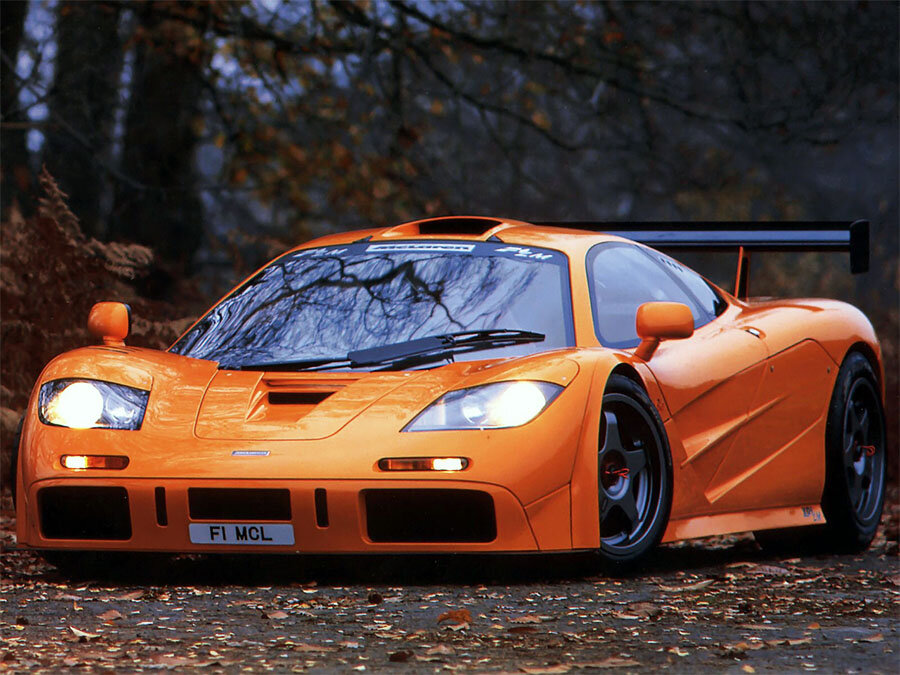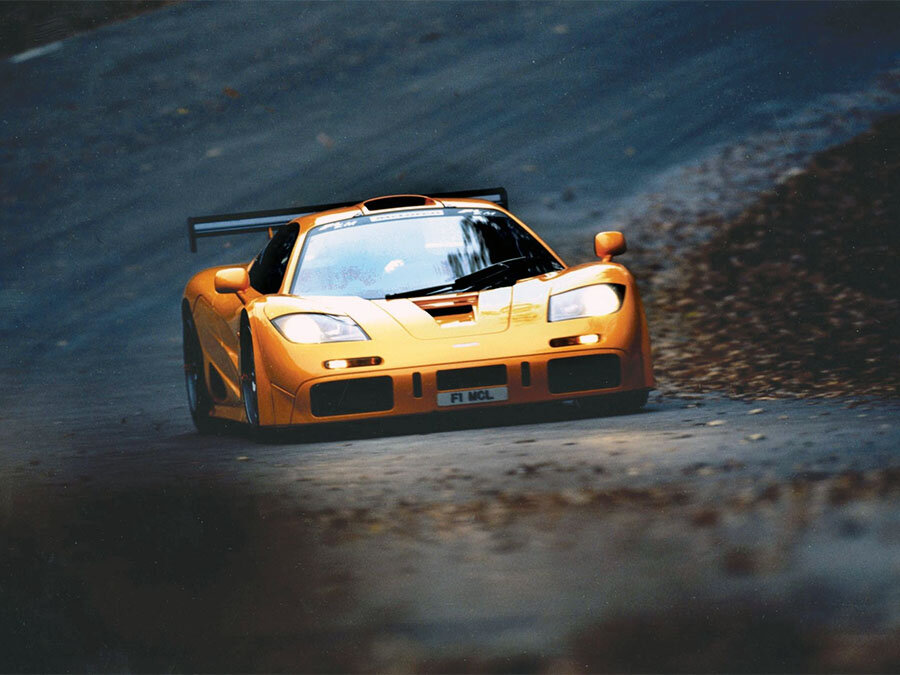Guide: the F1 Goes Homologation Special - a Historical & Technical Appraisal of the McLaren F1 LM
/BACKGROUND
McLaren’s F1 GTR was easily the most successful GT1 racing car of 1995.
In addition to ten wins in the BPR GT Championship, it also achieved a historic outright victory at Le Mans.
Not only were McLaren the first marque to win Le Mans at their maiden attempt since Ferrari in 1949, the F1 was the first genuine Grand Touring vehicle to take outright victory since 1979.
Despite these achievements, during the course of 1995, the F1 had routinely been outpaced by the qualifying speed of Ferrari’s F40 GT Evolution. Had the F40s experienced better luck and greater reliability, the season would likely have been a much closer affair.
For 1996, Ferrari had an uprated F40 Evolution 2 on the way. A GT1 version of the recently introduced F50 was also expected to break cover in late summer.
Meanwhile, Porsche were known to have a scratch built GT1 car up their sleeve.
To retain their advantage, McLaren wanted to introduce a number of updates for their 1996 iteration of the F1 GTR.
In order to do so, they launched a revamped base car equipped with some special equipment: the F1 LM.
Then current GT1 regulations stipulated that only one road car had to be made for a racing variant to be homologated. However, after the works prototype had been manufactured to satisfy the rule makers, McLaren built a further five F1 LMs to celebrate the quintet of GTRs that had finished first, third, fourth, fifth and 13th at Le Mans.
Each was priced at £680,000 plus tax, just £40,000 more than a standard F1 road car.
The F1 LM prototype (chassis XP LM) was unveiled at the McLaren factory in Woking during the second week of December 1995. Designer Gordon Murray was on hand and described it thus: “as close to a GTR for the road as you could get”.
CHASSIS
Like every F1 derivative (GTR included), the LM used a standard carbonfibre monocoque lifted from McLaren’s production line.
GTR and LM tubs were given their own numbering sequence though; the prototype was designated XP LM and the customer cars were numbered LM1 through LM5.
Suspension was via aluminium alloy double wishbones, gas-filled Bilstein dampers and co-axial springs.
As per the GTR, the LM did without the F1 road car’s Ground Plane Shear Centre designed to minimise castor wind-off at the front.
Likewise, solid aluminium bushings were used instead of rubber.
The LM was configured with a ride height 10mm lower than the standard F1. By contrast, the 1995 specification GTR ran 45mm lower at the front and 40mm lower at the rear. The 1996 incarnation was dropped by a further 15mm at the front.
Although Carbon Industrie brakes had been introduced as part of the GTR’s optional £40,000 Le Mans pack, the LM came with steel Brembo discs and four-piston monobloc calipers imported from the F1 road car.
These cross-drilled and ventilated discs had a 332mm diameter at the front and 305mm diameter at the rear. By comparison, the steel GTR discs measured 380mm and 355mm respectively.
GTR-spec. 18-inch OZ Racing wheels were an inch taller than on the standard F1. At 10.85-inches wide front and 13-inches wide rear, the handsome magnesium rims were a considerable step up on the 9 and 11.5-inch wide road car wheels.
Tyres were special Michelin SX-MXX3s.
A regular 90-litre fuel tank fitted behind the driver’s seat was used instead of the FIA-spec. 100-litre safety cell.
ENGINE / TRANSMISSION
Although racing regulations meant the F1 GTR had to run engines fitted with 39.4mm air restrictors, there was no such requirement for road use. Consequently, the LM was equipped with the most potent engine fitted to any McLaren F1.
As usual, the dry-sumped all-alloy BMW Motorsport 60° V12 featured dual overhead camshafts, four valve cylinder heads and variable valve timing.
Displacement was unchanged at 6064cc thanks to a bore and stroke of 86mm and 87mm respectively.
The 11.0:1 compression ratio used across the board was also retained.
The LM’s special S70/2 motor came with re-mapped TAG engine management software that gave a considerable horsepower boost: 680bhp compared to 600bhp for the air restricted GTR or 627bhp for the F1 road car. Peak power was delivered at 7800rpm, 300rpm higher than both other derivatives.
The torque rating was 520lb-ft at 4500rpm.
Each LM engine came with special orange cam covers.
Transmission was via a GTR-sourced straight cut six-speed manual gearbox. This was housed in an aluminium casing like the 1995-spec. racer and not the magnesium housing adopted for 1996 GTRs.
BODYWORK
Cosmetically, the LM was equipped with a full GTR bodykit that featured a mix of 1995 and 1996 details.
The front apron housed squared off brake cooling ducts and a newly enlarged central intake. Underneath was a carbonfibre splitter to enable homologation of an even bigger version for the 1996 GTR.
A secondary intake was added to the front lid to replace the pair of NACA ducts located inboard of the headlights on 1995 GTRs.
Five new horizontal slats were added atop the front fenders.
Body coloured GTR side skirts were installed.
The cooling scoop usually found ahead of each rear wheelach was deleted.
In order to accommodate the wider OZ rims, GTR wheelarch extensions were fitted at the front.
Like the racing variant, the road car’s electronic rear spoiler and fan-assisted ground effect were both absent. Instead, the GTR diffuser was installed along with an adjustable carbonfibre rear spoiler mounted on twin pylons.
Bigger endplates were added to the rear spoiler, each of which had a face etched with the GTR logo and a script that read ‘24 Heures du Mans Winners 1995’.
INTERIOR
Inside, the LM was a mix of road and race car.
Like nearly all F1s, it came with a dash upholstered in dark grey alcantara.
As the air-conditioning system had been removed, a single ventilation outlet was mounted either side of the instrument binnacle as per the GTR.
The switchgear pods on each side of the main binnacle were also upholstered in alcantara and given carbonfibre fascias. The one on the left housed a fog light switch while the one on the right was home to a hazard warning light switch. By contrast, the F1 road car housed three different switches in each of its untrimmed pods.
Green on black analogue instrumentation was unique to the LM. It replaced the black on white gauges normally used in the F1 road car and the Stack digital read out of the GTR.
A suede-rimmed GTR steering wheel was fitted complete with special ‘LM V12’ badging.
The dimpled gear knob was also unique to the LM.
Whereas the GTR was a single seater with all manner of electronic systems in the passenger zones, the LM could accommodate a full complement of three occupants.
The GTR’s enormous carbonfibre bank of switches located to the driver’s right-hand side was dramatically reduced in size for the LM. To the driver’s left was a super lightweight handbrake assembly.
No carpet or audio system was fitted.
WEIGHT / PERFORMANCE
McLaren quoted a weight of 1062kg which made the LM 78kg lighter than a standard F1 road car.
The 0-62mph time came down to three seconds, but because of the downforce-inducing body kit, top speed dropped from 241mph to 225mph.
PRODUCTION
The five F1 LM customer cars were produced over the spring and summer of 1996, immediately after the nine ‘96-spec. GTRs.
Chassis LM1, LM4 and LM5 were sold to the Sultan of Brunei. LM1 and LM4 were both painted black with blue, yellow and silver stripes. LM5 was Historic Orange.
Chassis LM2 was Historic Orange and sold to ZENT CEO, Yoshio Tsuzuki in Japan.
Chassis LM3 was Historic Orange. This car was purchased by British economist, David Morrison, who also owned Parabolica Motorsport. LM3 was later sold to American IT consultant, Frank Selldorff, who in turn passed it on to fashion designer, Ralph Lauren.
The F1 LM prototype (XP LM) was retained by McLaren.
Text copyright: Supercar Nostalgia
Photo copyright: McLaren - https://www.mclaren.com


































